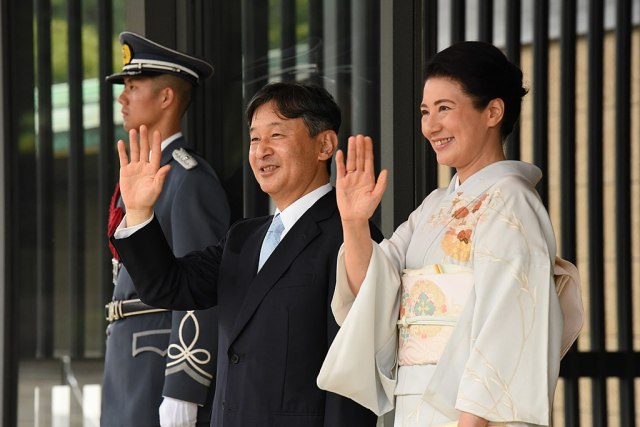
The complex in Tokyo’s Chiyoda ward, which serves as a home for Japan’s royalty, is almost three decades old.
Given the status of Japan’s imperial family, it comes as little surprise that their accommodations are swanky and numerous. While the imperial family has been temporarily residing at the Akasaka Imperial Residence in the heart of Tokyo, lately it is has been revealed that the imperial household will be moving back to their complex on the grounds of the Imperial Palace in Tokyo’s Chiyoda ward.
After a year of renovation, the new imperial residence at the palace has been readied for the well-scrutinized family, and a new video tour has been released of the grounds.
▼ Snapshots of the imperial residential complex at the palace where Japan’s emperor and empress often host distinguished guests from overseas.
First built in 1993 and used by Emperor Emeritus Akihito and Empress Emerita Michiko during their reign, before it underwent renovation, the building will soon house the Japanese imperial family starting from mid-September, after the Olympics and Paralympics. Renovation consisted of replacing the complex’s electric wiring, plumbing, wallpaper, and other refurbishment necessities, and the whole project came to a whopping total of 870 million yen (US$7,898,607).
At first glance, the exterior seems mostly untouched as a building with a sturdy concrete foundation, providing a stark contrast to the surplus of trees surrounding it, and its copper sheet roofing pays homage to traditional styles of Japanese architecture. In terms of its size, the entire complex spans 5,290 square meters (approximately 6,327 square yards).
Click on the timestamped videos below to be taken to the corresponding rooms as we go through the tour.
▼ A brief look at the floor plan of the complex.
Stepping inside the palace’s imperial residence, the first room is a reception hall for the imperial family and staff to receive dignitaries from abroad and related, honorary guests. An open foyer and soft lighting imbue the entryway with an inviting, bright atmosphere which no doubt has given previous visitors a positive first impression.
Of course, the modern interior of the imperial residence is well-paired with an ample amount of nature. Two interior courtyards growing konara oak and Japanese red oak provide an abundance of greenery for those indoors.
Given how the imperial family regularly welcomes special guests, there’s a small break room paneled in wood for folks to rest in-between functions. The room is also used as a waiting room for distantly related imperial family members who are visiting for the day. Interpreters and supporting staff also have their own waiting room in a separate area of the complex.
Next, the virtual tour takes us into one of the complex’s hallways. With square lamps referencing traditional Japanese carpentry and paper craft for their design, the hallway has the air of an elegant ryokan or a traditional Japanese inn.
Small details such as the carpet pattern are also given extra consideration—a closer look at the floor reveals a repeating shikainami emblem, which is a traditional Japanese art motif representing waves. However, there is a special significance to this symbol. A sneak peek at its origins points to a phrase from traditional Japanese theater: “shikainami shizuka nite.” Literally the phrase translates to “four sea waves brought to silence,” but the meaning of the phrase is “a world at peace.”
Past the hallway, viewers are shown other areas specifically dedicated as meeting rooms between the imperial family and overseas visitors. Rooms differ, depending on the guests’s level of status with certain ones designated for world leaders and others for foreign diplomats. The shikainami motif reappears in the carpeting and some rooms are floored in warm hardwood instead.
Special areas such as this room used for taking family photos and Empress Emerita Michiko’s piano room can also be seen. The former is familiar with Japanese citizens as it has frequently served as the backdrop for the imperial family’s New Year photos, save for last year, and the latter is of no surprise given the former empress’s deep love and talent for the instrument.
Lastly, the virtual tour proceeds to the final segment of the complex which are the guest rooms. While guests from overseas don’t necessarily stay in these rooms, visiting members of the imperial family are free to use these spacious living quarters during their stay at the imperial residential complex.
There’s even a room designated for the imperial family’s chamberlain, though it should be noted that such a room is not commonly occupied.
In terms of other spaces the refurbished imperial residence contains, but is not shown due to privacy and security reasons, the complex also houses the living quarters of the imperial family, an office for staff handling the imperial household’s affairs, a dedicated garage, and even a gym. While we may understandably not have visual access to such areas, for those extra curious of the imperial family’s lifestyle, you can always try staying at the hotel which has hosted four of Japan’s former emperors for at least 30,000 yen (US$ 280) a night.
Source: NHK News
Top image: Wikipedia/TICAD7 Photographs
Insert videos: YouTube/TBS News, YouTube/テレ東BIZ
● Want to hear about SoraNews24’s latest articles as soon as they’re published? Follow us on Facebook and Twitter!

No hay comentarios:
Publicar un comentario